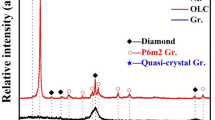Abstract
The popularity of biodiesel is continuously increasing nowadays because of fossil fuel’s shortage and environment concerns. Biodiesel is renewable, carbon neutral, and, most importantly, usable in diesel engines without modification. Particularly, the biodiesel from palm oil, palm methyl ester (PME), has become the main source of the world’s biodiesel due to its availability. One of the main concerns in biodiesel fuel usage is its ability to lubricate the mechanical components of the fuel system such as injection pump and nozzle sprayer since those parts are mainly lubricated by the fuel. In this research, an investigation has been conducted to analyze the characteristic of a tribofilm (boundary film) produced by friction of self-mated stainless steel at boundary lubrication condition using palm methyl ester as the lubricant. The friction tests were conducted using a ball on disk tribometer. The results show that excessive wear of the material was prevented; thanks to the tribofilm formed on the contact interface. The analysis shows that the tribofilm has a unique characteristic indicated by the presence of D-band’s peak but the absence of G-band’s peak in its Raman spectra. It seems that the carbon-based tribofilm was formed on the solid surface as a result of carbon decomposition from the palm methyl ester assisted by the tribo-chemical reaction. Although its real structure is still not clear, the tribofilm has an excellent ability to protect the material from severe friction and wear.











Similar content being viewed by others
References
Lacis, A.A., Schmidt, G.A., Rind, R., Ruedy, R.A.: Atmospheric CO2: principal knob governing earth’s temperature. Science 330, 356–359 (2010)
Capunitan, J.A., Capareda, S.C.: Characterization and separation of corn stover bio-oil by fractional distillation. Fuel 112, 60–73 (2013)
Daroch, M., Geng, S., Wang, G.: Recent advances in liquid biofuel production from algal feedstocks. Appl. Energy 102, 1371–1381 (2013)
De Silva, P.R., Priest, M., Lee, P.M., Coy, R.C., Taylor, R.I.: Tribometer investigation of the frictional response of piston rings when lubricated with the separated phases of lubricant contaminated with the gasoline engine biofuel ethanol and water. Tribol. Lett. 43(2), 107–120 (2011)
BP Statistical Review of World Energy June. https://www.bp.com/content/dam/bp/en/corporate/pdf/energy-economics/statistical-review-2017/bp-statistical-review-of-world-energy-2017-full-report.pdf (2017). Accessed 12 Sept 2017
Chong, C.T., Ng, J.H., Ahmad, S., Rajoo, S.: Oxygenated palm biodiesel: ignition, combustion and emissions quantification in a light-duty diesel engine. Energy Convers. Manag. 101, 317–325 (2015)
Kim, S., Dale, B.E.: Life cycle assessment of various cropping systems utilized for producing biofuels: bioethanol and biodiesel. Biomass Bioenergy 29, 426–439 (2005)
Xu, Y., Hu, X., Yuan, K., Zhu, G., Wang, W.: Friction and wear behaviors of catalytic methylesterified bio-oil. Tribol. Int. 71, 168–174 (2014)
Masjuki, H.H., Maleque, M.A.: The effect of palm oil diesel fuel contaminated lubricant on sliding wear of cast irons against mild steel. Wear 198, 293–299 (1996)
Choi, U.S., Ahn, B.G., Kwon, O.K., Chun, Y.J.: Tribological behavior of some antiwear additives in vegetable oils. Tribol. Int 30(9), 677–683 (1997)
Haseeb, A.S.M.A., Sia, S.Y., Fazal, M.A., Masjuki, H.H.: Effect of temperature on tribological properties of palm biodiesel. Energy 35(3), 1460–1464 (2010)
Wain, K.S., Perez, J.M., Chapman, E., Boehman, A.L.: Alternative and low sulfer fuel options: boundary lubrication performance and potential problems. Tribol. Int. 38(3), 313–319 (2005)
Xu, Y., Wang, Q., Hu, X., Chen, J.. Preliminary study on the tribological performance of straw based bio-fuel. In: Procedings of the STLE/ASME International Joint Tribology Conference: IJC2007, USA, pp. 1022–1024. (2007)
Sharma, B.K., Kenneth, M.D., Sevim, Z.E.: Ester hydroxy derivatives of methyl oleate: tribological oxidation and low temperature properties. Biores. Technol. 99(15), 7333–7340 (2008)
Knothe, G., Steidley, K.R.: Lubricity of components of biodiesel and petrodiesel. The origin of biodiesel lubricity. Energy Fuels 19, 1192–1200 (2005)
ASM Aerospace Specification Metal Inc. http://asm.matweb.com/search/SpecificMaterial.asp?bassnum=mq304a (2018). Accessed 1 May
Song, C., Hao Yu, H., Li, L., Lu, J.: Effect of carbon at interface of austenite on manganese segregation of low carbon and manganese steel. Mater. Lett., 174, 75–58 (2016)
Ibrahim, B.T., Motomichi, K., Burak, B., Demircan, C., Akiyama, E., Tsuzaki, K.: High concentration carbon assist plasticity-driven hydrogen embrittlement in a Fe-high Mn steel with a relatively high stacking energy. Mate. Sci. Eng A 717, 78–84 (2018)
Erdemir, A., Eryilmaz, O.L., Ramirez, G., Narayanan, B., Liao, Y., Kamath, G., Sankaranarayanan, S.K.: Carbon-based tribofilms from lubrication oils. Nature 536(7614), 67–71 (2016)
Acknowledgements
The Taiho Tribology Research Foundation (TTRF) and The Directorate of Higher Education, Kemenristekdikti Indonesia are highly acknowledged for this research. Funding for this research are provided by TTRF in 2013 and KemenristekdiktiIndonesia in 2014. The authors would like to express a sincere appreciation to Dr. Takanori Takeno for fruitful discussion and valuable supports in this research work and to Ms. Tomomi Watari and Dr. Hirotsuna Sato for assistances in data analysis.
Author information
Authors and Affiliations
Corresponding author
Rights and permissions
About this article
Cite this article
Fuadi, Z., Adachi, K. & Muhammad, T. Formation of Carbon-Based Tribofilm Under Palm Methyl Ester. Tribol Lett 66, 88 (2018). https://doi.org/10.1007/s11249-018-1036-8
Received:
Accepted:
Published:
DOI: https://doi.org/10.1007/s11249-018-1036-8




